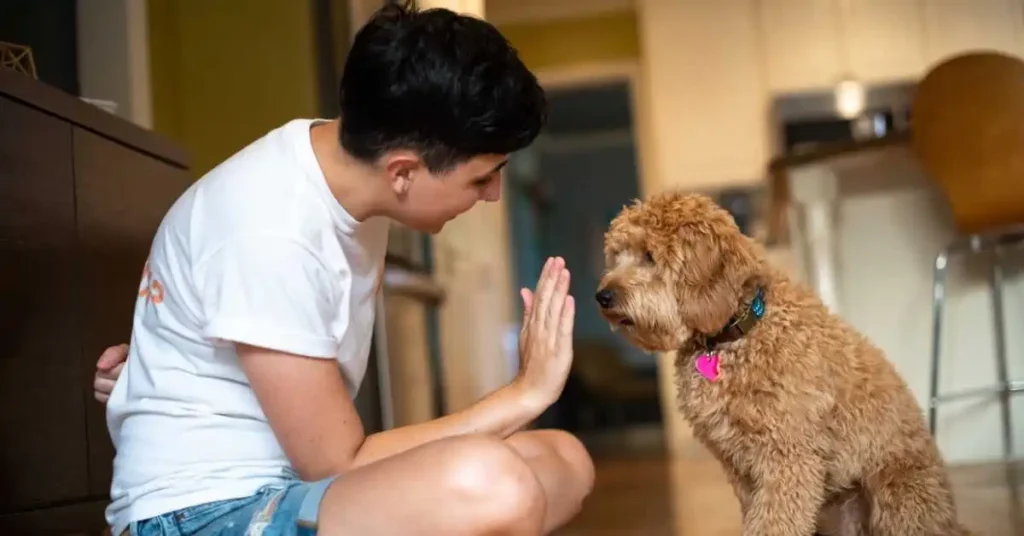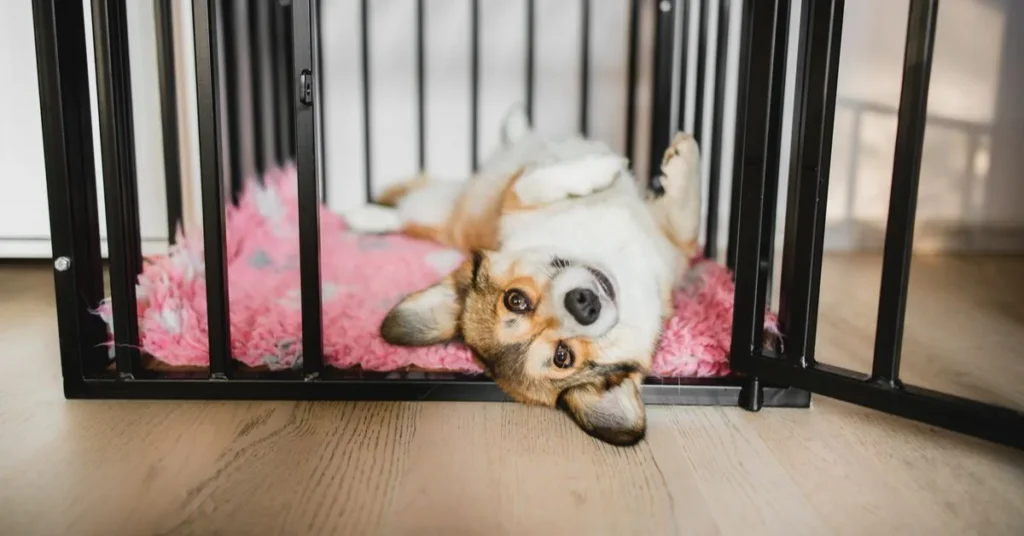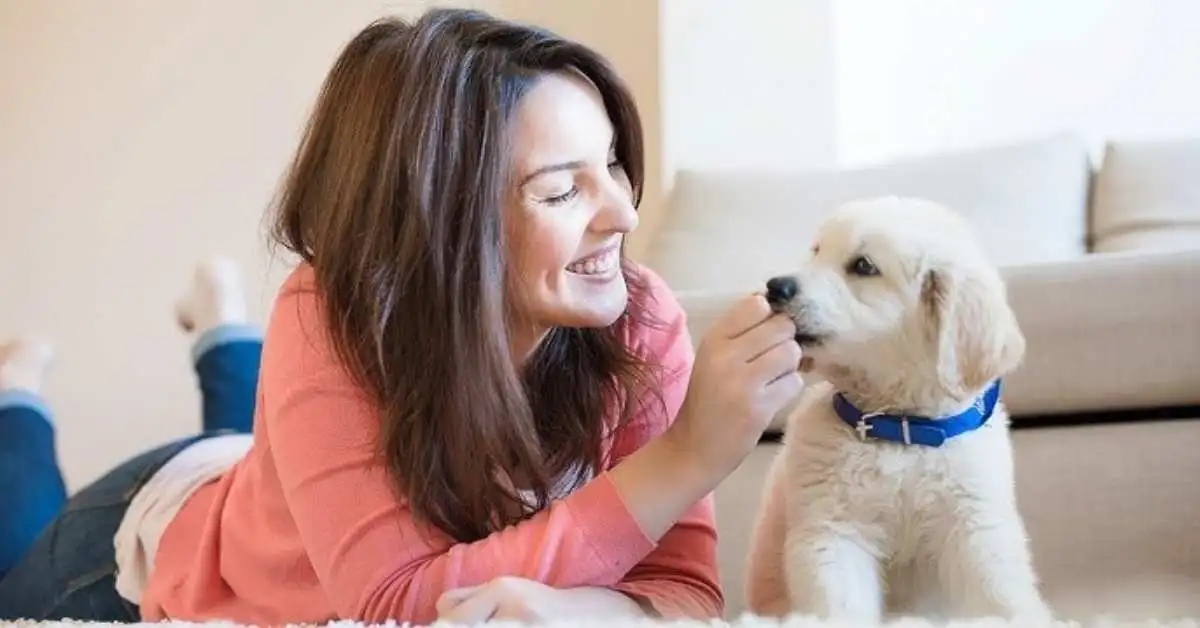Puppy Training Basics: From Crate To Command
Puppy training is done with love, understanding, and simple methods. When you train with love and patience, the puppy will be secure and ready to learn. You can teach your puppy good habits in easy ways, like listening to you, behaving nicely, and feeling brave in different situations. This makes your puppy happy and helps you both become closer. It also helps your little dog grow into a loyal and well-behaved friend. Let’s understand the puppy training steps in simple terms.
Further Insights and Relevant Content About Dogs

Crate Training A Safe Place For Your Puppy
A crate is like a special box or small house that creates its own space for your puppy training. It helps a little dog feel safe and comfortable, especially when he’s tired or wants comfort. The crate teaches him where to rest, and it also helps keep order in your home, reducing sleeping in the wrong place or messing things up.
How do you choose the right crate?
Consider size:
Get a crate that fits your puppy’s size. He could easily stand up, move around, and lie down in it.

Make it comfortable:
Place soft clothes or blankets inside the crate to make the puppy comfortable and relaxed.
Create a safe space:
Do not scare or force the puppy out of the crate. Make the crate a place where he can go happily and comfortably.
Crate puppy training should be done with patience and love. Give it a little time, and watch as your puppy quickly comes to love the crate as his special place.
Potty Puppy Training
Teaching your puppy where to potty is very important and will only take patience and practice because a puppy’s bladder is so small that frequent bowel movements are essential. Taking him outside right after eating, playing, or sleeping helps teach him where to go potty, and it gets potty training done quickly. This is an essential part of puppy training. When the puppy poops in the right place, immediately praise him and give a small reward so he knows he did the right thing. Patience is essential in puppy training, and in the beginning, the puppy will need to be taken out frequently to learn the correct habits. If he potties in the wrong place, gently explain instead of scolding him, and in time he will get used to pottying in the right place.
Teach Basic Commands For Good Puppy Habits
Teaching puppy training commands like sit, come, and stop helps the puppy develop good behavior and safety.
Teach sit:
Place the treat near the puppy’s nose and move it upwards so that it sits naturally. As soon as they sit, say sit and give a treat.

Teach come:
Joyfully calls the puppy by name and says Come. When they come to you, immediately praise and reward them.
Teach Stop:
Sit the puppy, then give the stop signal with your hand. Step back, come back, and reward the puppy if he stops.
Have short sessions:
Have short sessions of 5-10 minutes daily. Puppies learn best with short and fun training.
These simple commands for puppy training make life easier for you and your puppy.
Positive Rewards
Puppy learns quickly by receiving rewards for good work. Instead of punishing, adopt a positive approach. As soon as the puppy does something good, give it a treat, praise, or affection. Time is very important. If the puppy does something wrong, like chewing on furniture, gently give him the right thing, like a chew toy. Yelling or hitting can scare the puppy and make training difficult. Rewarding makes the puppy happy and training interesting.
Socialization
Introducing your puppy to a variety of animals, meeting people, and enjoying him to different places helps lower his fears and build his confidence. Introduce your puppy to family members and close friends first, then gradually introduce him to other pets and neighbors. Make these encounters positive and reward the puppy when he is calm and happy. Take him to new places like parks, and pet shops, or on short trips so he can see different sights and sounds. Always be aware of your puppy’s feelings. if he feels intimidated or hides, give him time to adjust and try again later. A well-socialized puppy becomes a confident, friendly, and happy dog.
Patience and Consistency
Training takes time and constant practice. Puppy doesn’t learn everything in one day, but with regular practice, he gets better.
Create a routine for puppy training: Set a time to eat, exercise, and take out. Puppies learn best from routine.
Celebrate small successes: Every success, no matter how small, is a joy. Appreciate the puppy on this one.
Don’t rush: If the puppy doesn’t understand something, give it time and practice again and again. Over time, your puppy will learn new tasks.
Get Help If Needed
If training seems difficult or the puppy’s behavior is unusual, don’t be afraid to ask for help.
Contact an expert trainer: A professional trainer can advise you and help you with specific issues.
See a Veterinarian: If the puppy’s behavior suddenly changes, it could be a health problem. Get checked by a doctor.
Having help makes training easier for both you and the puppy.







